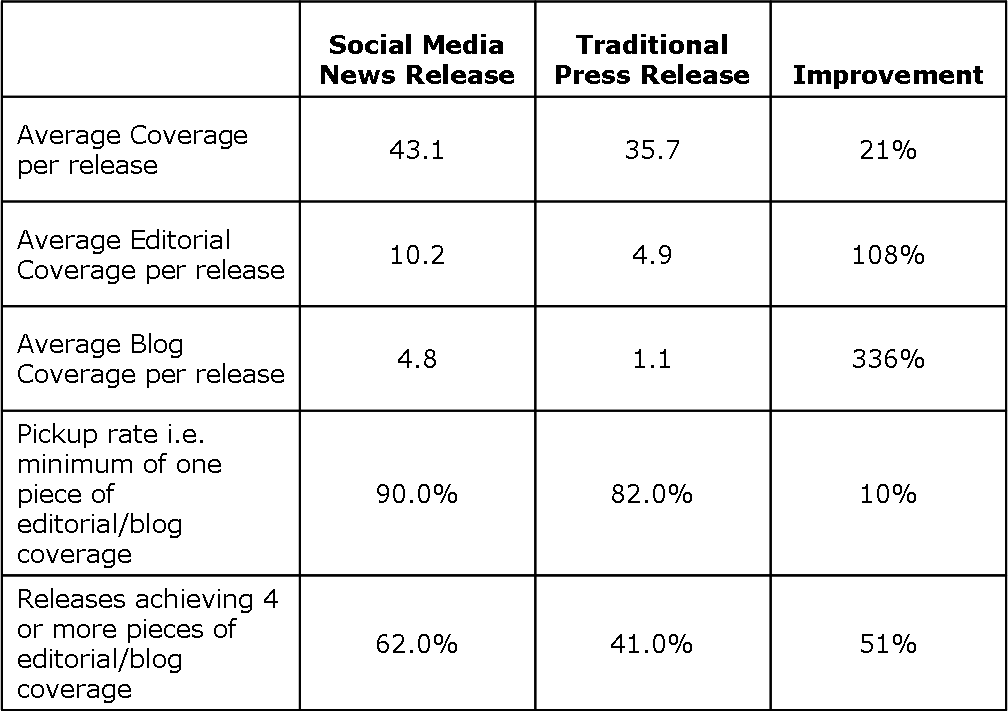I tried to pull together a short list of dos and don’ts of Online PR this week for a newsletter I was writing and throught I would share them here as well. It was aimed at an SME audience but I think the messages are relevant in general as well. I am expecting that people will have different views on what should make the top five in each case, so lets see these as starters for ten! 
Top 5 Online PR things you should do
– listen
– be authentic
– give
– respond
– stay in the conversation
Top 5 Online PR things you shouldn’t do
- forget online visibility
– spam
– be irrelevant
– treat as a channel
– ignore
Dos
Listen
If you do nothing else you should do this. The online media world offers a fantastic opportunity to listen to what people think about your industry, your business and your competition. Using the various sites and tools that are available will give you a wealth of information that would cost huge amounts in market research fees to have discovered in the “real” world.
This information will help you to understand the communities and influencers who are relevant to you and what topics they are interested in.
Be authentic
Just because you are in an online environment don’t forget that this world is still made up of people not computers. People like authenticity. They like people who are genuine about themselves and in an online PR context this means being transparent about who you are and why you are approaching or engaging with a particular person or community.
If you start a blog where you will be covering topics that are sometimes self promotional in nature then be clear about this with your readers. If you comment on a blog post where you have a professional axe to grind ensure your potential bias is clear to the blogger and their community (unless you are confident they know you so well as to not need such clarity).
Give
Like your Mum and Dad probably taught you “it is better to give than to receive” and online this is still the case. Don’t go into a relationship with an individual or community online with an agenda or an expectation of something. Would you respond well to such an approach? Try and understand their needs and then give them something of value. This could still be of a commercial nature e.g. a travel business might provide details of special offers before these were given to the general public, but more often it will be less direct – some relevant guidance perhaps.
These no strings “gifts” will help to build the relationship and then hopefully that other well used phrase about giving will occur – “what goes around, comes around”.
Respond
Having listened to what people are saying online and possibly given something of value it is important to respond to their questions or concerns. Again, as in life in the “real” world, most people would think it rude if someone ignored or blanked them, particularly if they actually instigated the conversation.
This is potentially a challenge for organisations with large communities who want to talk to or about them. This is when you need to have a clear structure within the organisation as to who is going to field what questions and enter what conversations. For instance in may be appropriate for queries of a more customer service nature – “I have a problem with X” – to be responded to by someone from your customer service department rather than a PR or marketing person. Or at least direct them towards this more appropriate channel.
Stay in the conversation
Having responded and established a dialogue with communities don’t stop talking. This is a mistake a lot of people can make online. You do great work listening and understanding who is interested in similar things to you and your business, you engage them potentially through giving something of value and then respond to their initial interest.
Then you stop. You disappear from the online world. People visit your twitter feed but you have stopped tweeting. Their RSS reader never shows a new post from your blog. Where have you gone they wonder? At best they accept your sudden lack of interest and move on. At worst they feel slighted by your lack of investment in sustaining the relationship and make their feelings known!
Don’ts
Forget visibility
The “dark side” so to speak of the transparency and durability of the online media world is that everything, and I mean everything, you say can end up online. It has become very common now for people to Tweet live while listening to a presentation for instance. You may not have considered the risk that what you said to that particular room could end up being relayed to 1.5bn internet users if they choose to find it, but it can.
Clearly the content you actually do produce and upload yourself, comments you make on blogs and tweets that you update will definitely be there for all to see. Don’t make the same mistake as these people and forget that online everyone is listening.
Spam
A fundamental temptation of the Internet is the ability to send a message to a huge list of recipients at the click of a button. In the days when “snail mail” or faxes were the only options the cost of paper, envelopes, stamps, phone calls and ink, never mind the time to produce them, meant that there was a price to be paid for spamming people.
With emails the price is paid by the recipient in the lost time through checking, and almost certainly deleting emails they didn’t want. Think carefully before pressing send – “have I earned the right to send this person an email?” At RealWire we take this very seriously and spend a lot of time researching and contacting sites to try and ensure we don’t fall foul of this. As we are human, we slip up occasionally, be we strive to improve all of the time as we know that permission is a fundamental part of any PR strategy.
Be irrelevant
This is very closely linked to spam. Effectively I will very quickly lose any permission I may enjoy to send people messages if I send them irrelevant content. A key reason for choosing “Top 5s” for these articles was the response to my previous newsletter which suggested that articles of this nature were more relevant to you the reader. Well I try and practice what I preach hence my response this month or I risk those readers who found the previous Top 5 article interesting choosing to “mute” me.
At RealWire we say that it is only through delivering relevance you can ever hope to achieve influence. Clearly the corollary will mean you achieve nothing.
Treat as a “channel”
I sometimes hear people talking about online as a “channel” i.e. print, broadcast and online channels. I understand why it is thought of in this way but for me this misses a fundamental point about the online media. The reason I refer to it as “the Online Media World” is because that is what it is – a virtual equivalent of the real world.
People are publishing, like they do in newspapers, on websites, or broadcasting on sites such as You Tube or even BBC’s IPlayer, but they are also giving opinions, sharing stories, commenting and generally talking about things that interest them. Just like we do in the real world. Because the online world is populated by people as well just connected via telecommunications providers and ISPs. This means that everything you think about doing offline in PR terms you need to think about online.
Ignore
Last, but definitely not least, the one thing you must not do is ignore the online world. For two key commercial reasons.
Firstly because people will talk about you whether you engage or not and if you don’t engage you can’t tell your side of the story.
And second because at least some, if not all, of your competition will engage online and with 1.5bn people to talk to that could turn into a pretty hefty competitive advantage.
 Protecting the real world from the ravages of pollution and preserving our natural resources was once considered the preserve of environmental activists. Not anymore. Recycling, energy conservation and reducing our carbon footprint are now mainstream activities.
Protecting the real world from the ravages of pollution and preserving our natural resources was once considered the preserve of environmental activists. Not anymore. Recycling, energy conservation and reducing our carbon footprint are now mainstream activities.